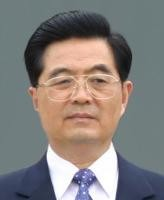Reports last week suggested that China is considering investing in a large, 1,000-megawatt reactor in Pakistan, in addition to the two small reactors recently agreed upon by the two countries. If validated, the reports indicate that Chinese policymakers have given the go-ahead to a nuclear development plan prioritizing early export of indigenous large reactors, while simultaneously underlining Beijing's willingness and ability to pursue a policy of nuclear exceptionalism in the subcontinent.
The backstory on the reported deal dates back to 2004, when the smaller State Nuclear Power Technology Corporation (SNPTC) won a momentous decision from Chinese planners to proceed with a domestic nuclear development plan based around imported designs. The plan beat out a competing proposal by China National Nuclear Corporation (CNNC), which preferred a more "indigenous" route to development.
CNNC refused to give up, however, and kept pushing for the development of the CNP-1000 reactor, which though designed with support from what was then Framatome (now Areva) and Westinghouse, is much more of a homegrown effort. Lacking approval to build domestic units, it sought permission for the export of two such plants to Pakistan. This plan, too, was shelved in 2007, after a 2006 State Council declaration heralded an emphasis on cooperation with foreign nuclear heavyweights "in order to master international advanced technology on nuclear power and develop a Chinese third-generation large [pressurized water reactor]." The deal currently being discussed with Pakistan in all likelihood represents a revived version of the CNP-1000 proposal.

